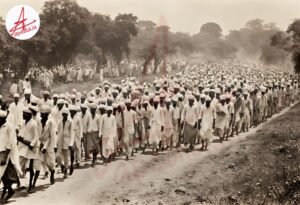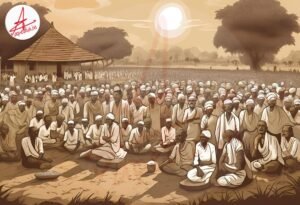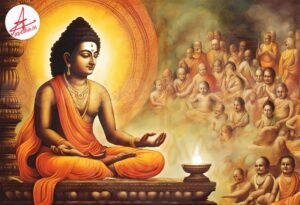Launched by Indian Muslims in 1919 to defend the Ottoman Caliphate and protect Muslim rights.
Leaders: Muhammad Ali Jauhar, Shaukat Ali, Maulana Abul Kalam Azad.
Objectives: Preserve the Caliphate, protect Muslim sacred places, maintain Muslim sovereignty.
Support: Mahatma Gandhi and the Indian National Congress.
Impact: Fostered Hindu-Muslim unity, contributed to Indian nationalism, ultimately failed to achieve its primary goals.
The Khilafat Movement was a significant political campaign launched by Indian Muslims in 1919, aimed at defending the Ottoman Caliphate and protecting the religious rights of Muslims worldwide. The movement was led by prominent figures like Muhammad Ali Jauhar, Shaukat Ali, and Maulana Abul Kalam Azad, and it gained widespread support from the Indian Muslim community.
The Khilafat Movement arose in response to the harsh treatment of the Ottoman Empire by the Allied powers after World War I. The British government, in particular, sought to dismantle the Ottoman Empire and strip the Sultan of his temporal power. This move deeply offended Indian Muslims, who viewed the Sultan as the Caliph, the spiritual leader of the global Muslim community.
The movement’s primary objectives were:
- Preservation of the Caliphate: The Khilafat leaders demanded that the Sultan retain his title and authority as the Caliph.
- Protection of Muslim Sacred Places: They sought to ensure that the Muslim holy sites in the former Ottoman Empire, such as Jerusalem and Mecca, remained under Muslim control.
- Maintenance of Muslim Sovereignty: The leaders advocated for the preservation of Muslim sovereignty in regions like Arabia, Syria, Iraq, and Palestine.
Mahatma Gandhi, recognizing the potential for Hindu-Muslim unity, supported the Khilafat Movement and encouraged cooperation between the two communities. He saw the movement as an opportunity to unite Indians against British rule and to promote religious tolerance.
The Khilafat Movement gained momentum with Gandhi’s support and the participation of prominent Hindu leaders. The movement organized various protests, including boycotts of British goods and non-cooperation with British authorities.
However, the movement faced internal challenges and external pressures. The British government’s refusal to address the concerns of the Muslims led to further tensions. Additionally, differences within the Muslim community itself and the emergence of communal violence hindered the movement’s progress.
Despite its ultimate failure in achieving its primary goals, the Khilafat Movement played a crucial role in Indian history. It marked a significant step towards Hindu-Muslim unity and demonstrated the potential for joint action against British rule. The movement also inspired subsequent nationalist struggles in India and contributed to the growth of Indian nationalism.
The Khilafat Movement left a lasting legacy in India. It fostered a sense of Muslim identity and strengthened the bonds between Indian Muslims and their global co-religionists. The movement’s emphasis on religious tolerance and interfaith cooperation became an important principle in Indian politics and society.
In conclusion, the Khilafat Movement was a significant political campaign that aimed to defend the Ottoman Caliphate and protect the rights of Indian Muslims. Although it did not achieve its immediate objectives, the movement had a profound impact on Indian history and contributed to the development of Indian nationalism.








